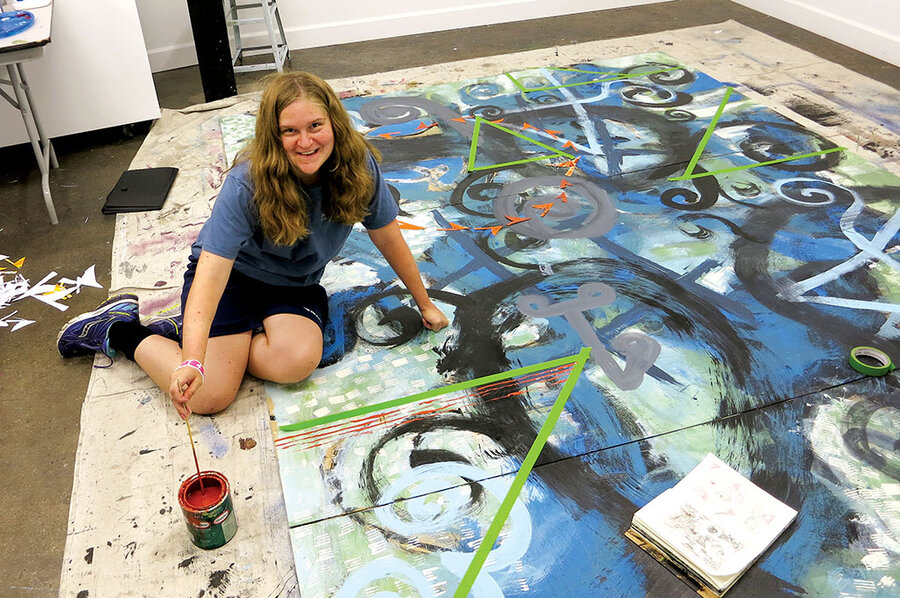A new opportunity for artists with disabilities
Loading...
In a regal bank lobby whose paneling and marble screamed 1800s, a group of Denver artists dared to install a contemporary abstract work – the most ambitious step yet for ArtWorks.
ArtWorks is a recent program launched by VSA Colorado/Access Gallery, which uses art to train and support young people with disabilities. For ArtWorks, Damon McLeese, director of VSA Colorado, solicits local business leaders to commission pieces for their office spaces and then partners ArtWorks participants with established artists to fulfill the commissions.
While ArtWorks has not yet spread beyond Denver since its 2014 launch, Mr. McLeese is getting queries from others affiliated with VSA, a nonprofit established by Jean Kennedy Smith in 1974. Annually around the world, nearly 5 million people participate in VSA programs such as the Denver classes that use art projects to teach teamwork and promptness.
McLeese, who says 70 percent of Americans with disabilities are unemployed, was frustrated that his trainees weren’t finding jobs. With ArtWorks, professional artists get a share of commissions and the assistants are paid an hourly rate close to minimum wage.
For the 8-by-12-foot abstract in the Colorado Business Bank, painter Michael Gadlin sketched out the design in swaths of red and blue. He then put assistants to work with mops and brooms instead of brushes. Throughout the project they learned about the rigor, audacity, and ambition that goes into making art. A.J. Kiel, a 25-year-old with autism who is an avid sketcher, used his earnings from the project to buy more art supplies.
Mr. Gadlin solicited input from his assistants, too. It was student Richard Johnson’s idea to use glints of gold to tie the painting to the lobby’s gilded ceiling. At the piece’s unveiling, Gadlin noticed that Mr. Johnson, who died before the ceremony, had used gold lettering to spell out “airborne” on the canvas.
“That’s what it’s called,” says Gadlin of the completed piece. “It’s taken us all to new levels.”







